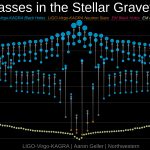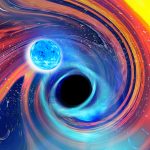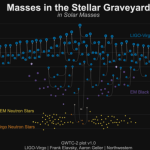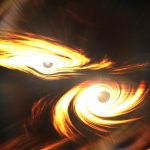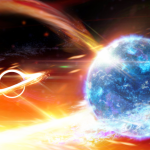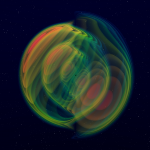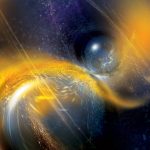Astrophysicists, including a team at UBC, have observed gravitational waves from the collision of two black holes with distinctly different masses, dubbed GW190412. This discovery gives us a glimpse of subtle harmonics in gravitational wave signals for the first time. These harmonics not only allow improved tests of Einstein’s theory of general relativity, they also allow researchers to better resolve how far away black holes are and how fast they are spinning before merging.
Gravitational waves are tiny ripples in the fabric of spacetime that carry information about the movements of massive objects in the Universe, like black holes. In 2016, the LIGO–Virgo collaboration announced the first direct detection of gravitational waves, and the first observation of two black holes orbiting each other. This system, detected in the two Advanced LIGO detectors on September 14, 2015, was composed of two black holes roughly 30 times the mass of our sun, that collided 1.4 billion light years away, released more than three solar masses of energy in a fraction of a second. This new discovery, GW190412, was produced when black holes roughly 8 and 30 times the mass of our sun merged into a heavier black hole.
UBC researchers made critical contributions to the discovery of GW190412. Jess McIver, an assistant professor in Physics and Astronomy at UBC, co-leads the international LIGO Detector Characterization team responsible for data quality and verifying that events like GW190412 are truly astrophysical. Dr. Evan Goetz, a research associate in McIver’s group, played a key role in calibrating the Advanced LIGO detector data for this discovery.
